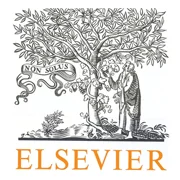دانلود ترجمه مقاله نظارت و بهینه سازی وضعیت آلودگی مقره های ولتاژ بالا
| عنوان فارسی |
نظارت و بهینه سازی وضعیت آلودگی مقره های ولتاژ بالا با استفاده از شبکه عصبی کانولوشنی بر پایه شبکه حسگر بیسیم |
| عنوان انگلیسی |
Monitoring and optimizing the state of pollution of high voltage insulators using wireless sensor network based convolutional neural network |
| کلمات کلیدی : |
تخلیه جزئی؛ مقره ولتاژ بالا؛ شبکه عصبی کانولوشنی؛ گره های حسگر |
| درسهای مرتبط | عایق و فشار قوی |
| تعداد صفحات مقاله انگلیسی : 6 | نشریه : ELSEVIER |
| سال انتشار : 2020 | تعداد رفرنس مقاله : 23 |
| فرمت مقاله انگلیسی : PDF | نوع مقاله : ISI |
|
پاورپوینت :
ندارد سفارش پاورپوینت این مقاله |
وضعیت ترجمه مقاله : انجام نشده است. |
1. مقدمه 2. روش پیشنهادی 3. نتایج و بحث و بررسی 4. نتیجه گیری

چکیده – در این مقاله، یک شبکه حسگر بیسیم (WSN) با «شبکه عصبی کانوالی» (CNN) ترکیب می شود و یک چارچوب هیبرید (ترکیبی) برای شناسایی وضعیت آلودگی در مقره های فشار قوی، تشکیل می شود. WSN با گردآوری قرائت های حسگر از هر مقره فشار قوی برروی دکل خطوط انتقال، تشکیل می شود. قرائت های گردآوری شده حسگرهای بدست آمده از شبکه حسگر به واحد پردازش یا واحد شناسایی ارسال می شوند، و در آنجا از CNN برای شناسایی تخلیه جزئی در مقره های فشار قوی استفاده می شود. استخراج ویژگی های مربوطه از CNN به بهبود شناسایی مشکلات کمک می کند. برروی مدل پیشنهادی، با مجموعه داده های آموزشی گردآوری شده و مجموعه داده های آزمون بلادرنگ، اعتباریابی تجربی انجام می شود. روش پیشنهادی با مدل های موجود یعنی «شبکه عصبی مصنوعی»، «بهینه سازی فازی» و «بهینه سازی کلونی مورچه» مقایسه می شود تا تخلیه جزئی در مقره های فشار قوی مورد آزمون قرار گیرد. نتایج نشان می دهند که روش پیشنهادی نسبت به روش های موجود از نظر «نرخ پذیرش کاذب» و «نرخ شناسایی مفقود شده»، موثرتر است. مقدمه: تخلیه های فرساینده، که همچنین به آنها در فنآوری فشار قوی «تخلیه جزئی» (PD) گفته می شود، می توانند باعث خرابی اجزاء HV مانند کابل ها، خازن ها و پیچه های ورودی شوند. در صنعت برق قدرت، تخلیه جزئی رخ داده در داخل و همچنین بیرون مواد عایقی، یک مسئله ماندگار و مداوم است. در خطاهایی مانند حفره های درون یک ماده عایقی، تخلیه جزئی داخلی شروع می شود درحالی که در لایه مرزی فلز-مقره، تخلیه جزئی بیرونی رخ می دهد. هر دو نوع PD، یعنی بیرونی و داخلی از یک نوع هستند. بهمن های الکترون تاونسند (town send) می توانند در ریز جرقه ها و استریمرها بوجود بیایند [2].
In this paper, a wireless sensor network (WSN) is combined with Convolutional Neural Network (CNN) forming a hybrid framework to detect the pollution state in high voltage insulators. The WSN is formed by the collection of sensor readings from each high voltage insulator over the transmission tower. The collected sensor readings from the sensor network is sent to the processing unit or detection unit, where CNN is used for the purpose of detecting the partial discharged high voltage insulator. The CNN is used with partial discharge diagnosis model to detect the dischargers in high voltage insulators. The extraction of relevant features from the CNN helps to improve the detection. The experimental validation are conducted on the proposed model with collected training datasets and real time testing datasets. The proposed method is compared with existing models to test the partial discharges in high voltage insulators, namely Artificial Neural Network, Fuzzy and Ant Colony Optimization. The result shows that the proposed method is effective in detecting the partial discharges than the existing methods in terms of False Acceptance Rate and Missing Detection Rate. Introduction: Erosive discharges, which can cause the failure of HV components such as cables, capacitors and inlet coils, also are referred to as Partial Discharge (PD) in high voltage technology. In the power industry, partial discharge appearing both inside and outside isolating materials is a persistent issue. In faults such as cavities inside an insulation material, an inner partial discharge is initiated while an external partial discharge at the metal insulator interface occurs. Both types of PD i.e. external and internal are of the same type. The town send electron avalanches can develop into micro- sparks and streamers [2].




دیدگاهها
هیچ دیدگاهی برای این محصول نوشته نشده است.